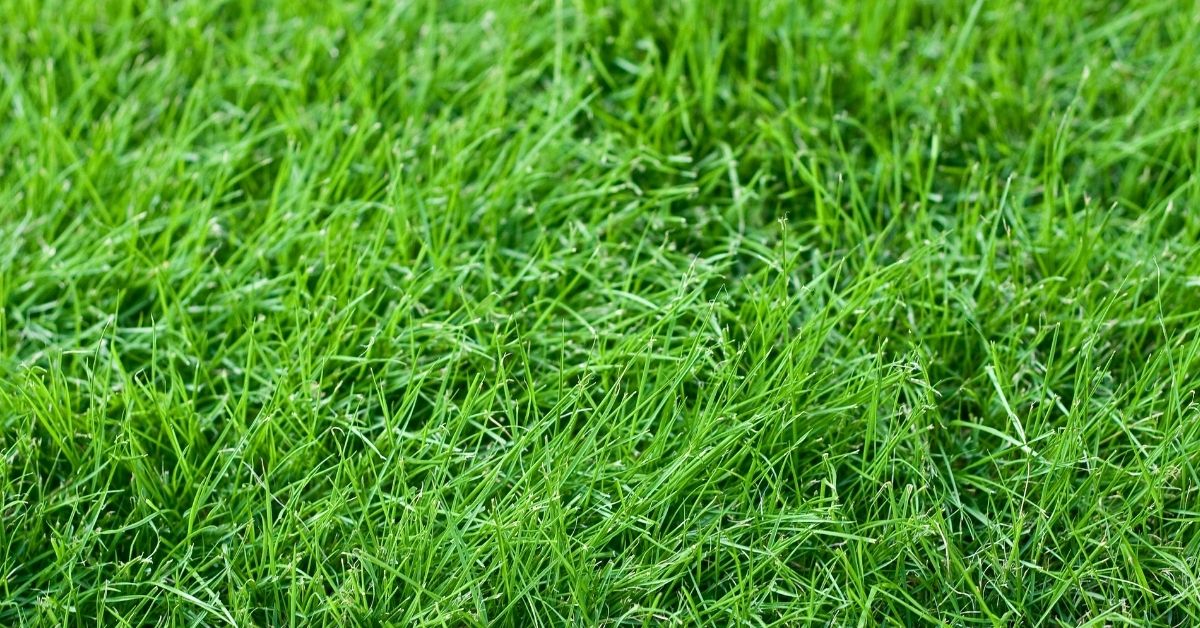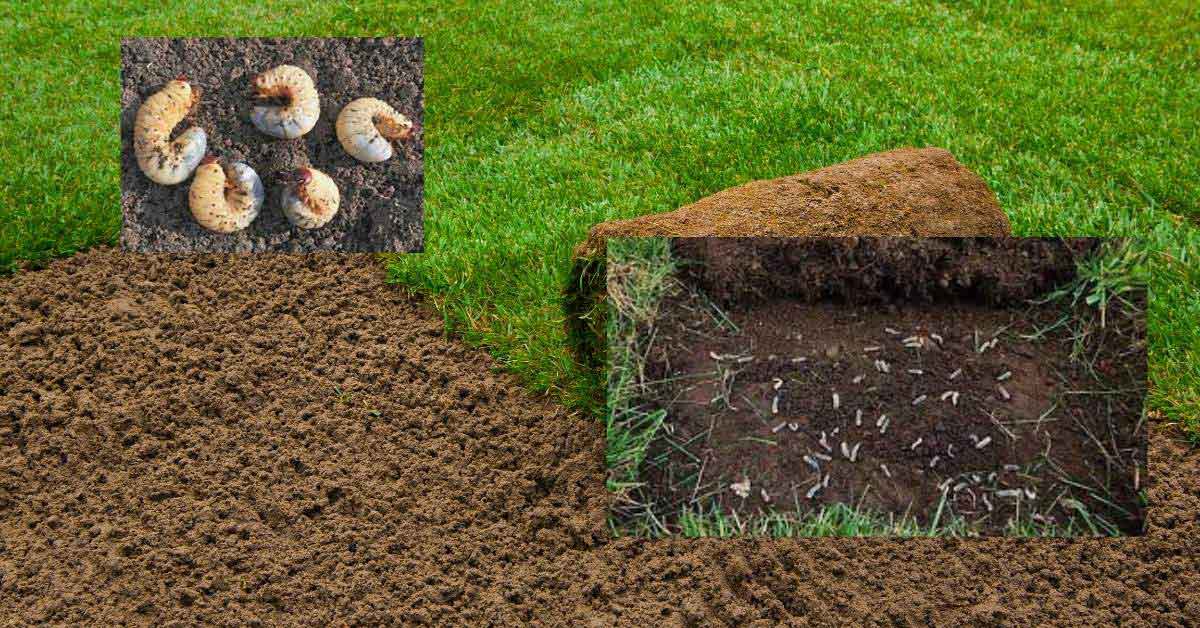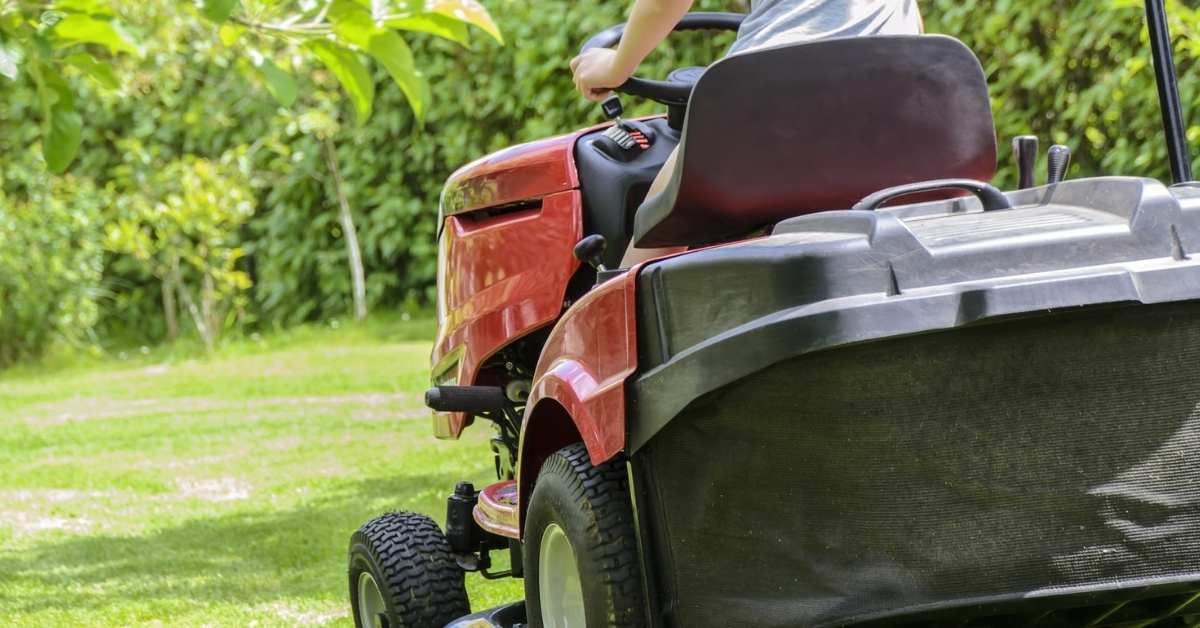Here is the only ultimate guide you will need on how to grow tall fescue grass and fine fescue grass, for lawns, sports fields, pastures, choosing the correct location, seed, and care afterward.
Facts About Fescue Grass
Fescue grasses are a group of cool-season grasses suited to the transition zone between the United States and Canada. Fescue grass species include tall fescue, a group of finer leaved, shorter fescue grasses, and Fine Fescue, a group of finer leaved, shorter fescue grasses that are easy to plant with grass seed.
| Common Name | Tall fescue grass |
| Botanical Name | Festuca arundinacea |
| Plant Type | Perennial, grass |
| Family | Poaceae |
| Hardiness Zones | 3-8 (USDA) |
| Sun Exposure | Full, partial |
| Soil Type | Loamy, sandy, clay, silt |
| Soil pH | Acidic, neutral |
| Mature Size | 4-12 in. high, 2-4 in. wide |
| Native Areas | Europe |

Creeping red, hard fescue, chewings fescue, and sheep fescue are fine fescue grass species. Drought-tolerant fescue grass cultivars require less fertilizer, have a deep root system, and are thus environmentally beneficial.
Pennington’s Tall Fescue Blend Smart Seed with natural microbes takes tall fescue to the next level in terms of environmental stewardship.
Unlike the bulk of cool-season grasses, Fescue grasses are shade tolerant and perform well in the lower transition zone, where the season is too hot for other cool grasses, and the transition zone is too cold in the winter warm-season grasses.
Many seed combinations of grass kinds, such as Kentucky Bluegrass and Ryegrass variations, contain fescue grass seed.
When planted in Fescue Grass Adaptation regions, all fescue grass cultivars have the same properties.
Shade tolerance, year-round greenness, and drought resilience are the three main characteristics. Tall Fescues are colder and shade resistant than Fine Fescues, yet both are widely utilized in the Central and Northern United States.
Fescue grass covers a significant gap in the grass field caused by climatic variances that are not entirely characterized by zone.
Fine fescues are commonly mixed with Kentucky bluegrass kinds for northern summer lawns and warm-season grasses for winter lawns. In milder climes, both Fine and Tall Fescues can stay green all year.
They will become dormant in regions that are too hot in the summer or too cold in the winter and will have a lighter green tint. Warm and cool grass lawns are both overseeded with fescue grass.
Fine & Tall Fescue Growing Range Map
Winter death can occur when Tall Fescue is planted in colder northern states with temperatures below 10°. Fine Fescue grasses are more resistant to cold. This map depicts the expanding range of both fine and tall fescues.
Types and Applications of Tall Fescue Grass
Improved tall fescue grass variants have been produced to outperform the classic Kentucky 31 Tall Fescue in lawns, sports fields, pastures, and other applications.
Because all turf-type tall fescues developed in the last 20 years are not elevated, the moniker “tall fescue” is deceptive. Tall fescue produces seed heads of around 3′ when left unmowed, with leaves and foliage reaching a height of fewer than 20 inches.
These new Tall Fescue Grass Seed types provide a better turf type grass that exceeds the previous Kentucky 31 variety and looks nothing like it. Titan RX Tall Fescue Grass Seed is a single variety Turf-type Tall Fescue Grass seed.
Tall Fescue Grass Seed is an enhanced type that produces a low-maintenance, fast-growing, thick, drought-tolerant turf lawn or sports field.
Single tall fescue grass types, such as Kentucky 31, were traditionally used for pasture. Fescue poisoning has been an issue in the past for horses, livestock, and other animals grazing and/or ingesting tall fescue grass feed. NEW Endophyte Free and Endophyte Friendly Tall Fescue pasture grass seed kinds have overcome this problem.
Tall fescue lawns are easily overplanted when the lawn is thin and starts to bunch, clump, and seem uneven. Extreme heat throughout the summer, illness or insect damage and other reasons can all contribute to this.
The Tall Fescue is overseeded to get the grass in shape before the next round of hot summer heat arrives in the fall. This is an excellent opportunity to introduce newer and better types to the lawn (particularly in older stands).
Several varieties may be over-planted yearly for increased grass performance. The type or kinds to plant should be chosen based on the region’s adaptation features.
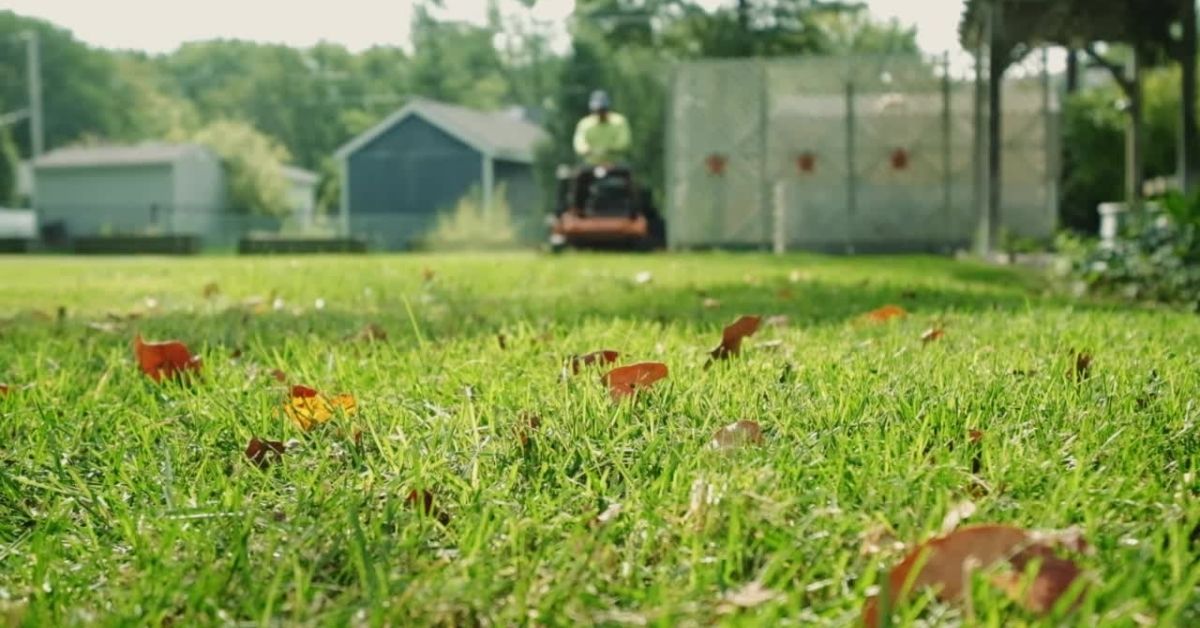
Varieties of Tall Fescue Seed Blends for Lawns and Sports Fields
Turf-Type Fescue Seed Blends are more dwarf-like in plant size, withstand high traffic, have a more robust blade structure, and have lower mowing capabilities than earlier kinds, resulting in far more beautiful lawns.
They are more drought-tolerant, disease-resistant, and perform better in hot weather. A lot has changed from the older, difficult tall fescue seed kinds. Rebel Shade Lawn Blend, Rebel Brand Tall Fescue, Defiance XRE, and Defiance XRE Blue – a rhizome, spreading tall fescue and Bluegrass Seed Mixture – are popular enhanced variety Blends.
Pennington’s Smart Seed Tall Fescue Smart Seed Blend has Myco Advantage, a revolutionary seed coating technology that reintroduces healthy, all-natural microorganisms into your lawn.
Over time, natural soil microorganisms can be eliminated or reduced frequently as a result of increased environmental stress and building processes. This might leave the soil lifeless and compacted.
MYCO AdvantageTM corrects this by attaching to emerging seed roots and assisting the grass in developing a denser, deeper root system (as shown in the image on the left). The result is a healthier, thicker lawn that uses available nutrients and fertilizer more efficiently and requires up to 30% less water. This is how nature meant it to be.
Varieties of Fine Fescue Grass Seed
Fine fescue grass seed variants are similar in that they all thrive in northern latitudes, grow in partial shade, have a finer leaf blade, and survive droughts regularly. Very high temperatures will damage fine fescue grass; thus, more water is required when heat waves continue longer than a week.
In terms of shade tolerance, fine fescues outperform other cool-season grasses. They can grow leaves more quickly in the shade but not as quickly in direct sunshine. Fescue grass uses substantially less water than Kentucky bluegrass and perennial ryegrass, and it is drought tolerant.
Fine fescue requires less fertilizing when grown in the shade, and a greater cutting height is advised. Because of the high lignin concentration in its leaf sheaths, which are slow to break down, thatch can be a concern. To eliminate thatch problems and improve the general health of your lawn, core aeration is advised.
Fine fescue grass is frequently blended with other grass seed types, such as bluegrass, to supplement that species’ adaptability zones. The Tradition Fine Fescue Blend combines fine fescue grass types to make use of each cultivar’s inherent characteristics.
Each of the fine fescue grass species listed below includes cultivars that have been enhanced by “breeding” through time, and each has its unique adaption and intended use features.
Years of turfgrass breeding have yielded excellent fescue variants that can withstand heat, humidity, and wear those previous kinds couldn’t. Here you may learn about the numerous fine fescue grass seed kinds.
Fescue Grass, Creeping Red
Creeping Red Fescue differs from other fine fescues in that it spreads via creeping. It spreads by short subterranean stems known as rhizomes, but not as aggressively as Kentucky bluegrass. Creeping red fescue is a cool-season grass that thrives in colder climates.
Fine fescues like Creeping Crimson fescue have slender, deep green blades with a tinge of red at the leaf base. Single stands of this fescue can be cultivated. Unlike most other cool-season grasses, it favors shadier and colder environments.
Creeping Red fescue is frequently mixed with Tall Fescue, Bluegrass, and Perennial Ryegrass combinations to increase shade tolerance. It is also drought tolerant to a degree.
While the slower-growing bluegrass is formed, Creeping Red fescue may swiftly establish itself on the lawn. This fescue cultivar is a non-aggressive, easy-to-maintain grass that over-seeds well in appropriate regions.
It’s also particularly lovely when left unmowed in a meadow, along a roadside, and at erosion areas on slopes or hillsides. Creeping Red fescue grass is a popular choice for grass seed combinations and overseeding cool grass lawns.
Fescue Grass Chewing
In terms of growth, Chewings fescue grass, Festuca rubra commutata, mimics Tall fescue grass in that it is more upright than creeping red with a bunch type growth but retains the fine fescue group’s smaller leaves.
Chewings fescue is a member of the Red Fescue family. Chewings fescue grass seed is most commonly used as a supplement to other grass seed blends. The combination of perennial ryegrass and chewings fescue is one of the most popular. Chewings modifications boost the capacity of the dominant grasses to function better.
Like other fescue grass, Chewings thrives in the shade, is drought tolerant, non-aggressive, and mixes with nearly any other grass. Chewings are not as wear-resistant as other fescue grasses, but they may be mowed shorter and loves sandy soils with poor fertility and high acidity.
Chewings fescue grass seed takes roughly fourteen days to germinate. This fescue may be mowed low to 1 inch when planted alone or in mixes, making it even more attractive. Chewings Fescue Grass is frequently over-seeded with other lawn grasses to increase diversity and solve problems.
Hard Fescue Grass
Hard fescue grass variants grow in a bunch-like manner, similar to Tall Fescue Grass but with thin upright leaves.
The hard fescue grass is one of the most “hardy” of the fescues. This fescue thrives best in northern regions at higher elevations, as it is shade and drought-tolerant, as well as disease resistant. Hard fescue grass has a lovely blue-green color and can thrive in the harshest of environments, including deeply shadowed locations.
Hard fescue grows in clumps and should not be mowed as short as other fescues. Hard fescue is a grass that remains green for longer, grows slowly, and requires little upkeep. Hard fescue varieties are being produced for wider use and acceptance as lawn grasses.
This fescue is excellent conservation, erosion, and reclamation grass for difficult-to-maintain locations. Hard fescue is the only fescue that can tolerate some salt.
How To Grow Tall & Fine Fescue Grass & Methods For Planting Grass Seed
Planting grass seed lawns may be done in a variety of ways. All grass seeds perform best when planted in a seedbed that has been newly prepared, tilled, firm, and free of plants and weeds. Good “seed to soil” contact is essential for grass seed germination.
The term “excellent soil contact” refers to the soil being in direct touch with the seed surface. The optimum seed/soil contact occurs when the seeds are totally enveloped by soil; the optimum seed/soil contact occurs.
When making good seed to soil contact and thus ensuring effective germination of your grass seeds, three grass seed planting criteria should be observed:
- The most crucial need is to plant grass seeds (soil-covered) at the proper depth. The depth of most grass seeds is 1/8 to 1/4 of the soil above the seed. Planting depth can be more incredible with other types of sources, but with grass seeds, it is frequently a significant element in germination.
- Second, excellent seed to soil contact implies that the soil is wet and in CLOSE touch with the seeds, allowing soil moisture to reach the seeds. After planting, carefully firming the soil with a light roller compresses the earth tighter around the seeds, promoting seed germination.
- Third, the temperatures (and season) must be appropriate for the type of grass seeds being sown in order for them to germinate. The seeds must also have enough moisture in the soil to germinate. Depending on the soil type, watering may be necessary many times daily to maintain the top inch or two of soil damp (not wet) for seed germination and seedlings (germinated seed plants) to grow.
Methods of Grass Seed Planting
Planting grass seed may be done in a variety of ways. Each has its own set of benefits and drawbacks. The following are links to information on the most common grass seed sowing methods:
- Planting on a seedbed that has been prepared (bare soil, harrowed, or tilled).
- Growing in a grass lawn that already exists.
- Broadcasting on the top of the soil/grass.
- Planting early or late in the season.
- Planting in the snow
- Erosion mats are used to plant.
- Hydroseeding.
- Using a slit seeder or a turf grass seeder to plant.
Planting in a seedbed that has been prepared – Bare Soil
The ideal option is to plant on a prepared seedbed. You’ve eliminated a lot of competition because you killed any existing “adult” weeds or other plants. When seedlings don’t have to compete for food, water, or sunlight with an established plant, they develop faster and are chevaliers (being the big bully).
Second, a seedbed has decreased soil compaction, allowing roots to push through and develop (find water and nutrients) more easily and quickly.
Finally, a prepared seedbed typically ensures greater “seed/soil” interaction. The main disadvantages are needing to till up an existing lawn area (perhaps destroying it) and having bare earth for a period of time while the new grass establishes.

Overseeding a grass lawn that already exists
Because seed/soil contact is generally less in an established grass, successful germination is more difficult. The goal is to increase seed-to-soil contact in some way. This approach works better (germinates easier) with cool-season grasses than with warm-season grasses.
Prior to Seeding, aeration (using a spike or plug aerator or a vertical mower to create slits in the soil) increases the possibility of individual seeds dropping adjacent to soil and being somewhat covered by soil owing to wind/rain action.
Experts frequently advocate greater planting rates since a percentage of seedlings will fail due to competition from existing grass or an inability to germinate correctly due to seed/soil contact issues. Raking the area before or after distributing seeds can aid germination by improving seed/soil contact and/or coverage.
Broadcasting from above the ground – Lawn Area.
This strategy is based on the quantity of seed/soil contact that may occur and the type of grass seeded (cold season vs. warm season). Warm-season grasses will seldom germinate if they are merely lying on the ground unless they are covered by soil due to some movement (walking, rain, raking, etc.).
On the other hand, cool-season grasses may only germinate partially because they sprout with reduced covering and soil contact sometimes… In reality, ryegrasses have the potential to germinate quickly with only good soil contact.
Fescues and bluegrasses need greater touch to germinate well. Aeration, raking, covering with topsoil, and other methods can all aid promote germination. Expect low germination rates with warm-season grasses (Bahia, Bermuda, Zoysia, Buffalo, Centipede) unless you have excellent seed/soil coverage at the optimum depths.
Planting early or late in the season
If you plant too early or too late, possibly due to the weather giving you spring fever early, or if you plant too late in the fall… Expect germination to be less than ideal (or perhaps NOT at all). To germinate, the first seeds require precise sowing temperatures.
Second, plants need a particular period of growing time at the proper temperatures and circumstances (rainfall, soil nutrients, etc.) to mature to the point where they can withstand any dormancy caused by hot or low temperatures or other weather extremes.
Grass seedlings are like babies: you wouldn’t leave them outside in temperatures below 55 degrees Fahrenheit or above 80 degrees Fahrenheit without some extra protection.
When does fescue come out of dormancy?
Some grasses have “dormant” seeds, which are nature’s way of conserving the species. These seeds went dormant successfully while waiting for the right temperatures and weather conditions to start germination. These seeds are frequently referred to as “un-hulled” seeds. Removing the hulls from seeds speeds up germination, removing nature’s dormancy barrier.
Your “baby” grass seeds are in the same boat. Plant when temperatures and weather are acceptable for your type of grass (early spring / early fall for cold season grasses, late spring / early summer for warm-season grasses.) and when temperatures and weather are appropriate for your type of grass.
You can plant outside of usual hours in some cases, but be aware that the hazards are larger. Excessively cold/damp soil can cause seed rot… or late cold temps might cause freeze/frost death after seeds develop owing to an early warm-up.
Planting through the snow
Cool-season grasses (perennial ryegrasses, fescues, and bluegrasses) can be effectively planted on top of the snow for winter planting. The seeds are brought down to the soil level in the spring by melting snow. The seeds can be “melted” into the crevices in the soil caused by the freezing temperatures of winter.
This allows for enough seed-to-soil contact. The downsides are the same as those listed above for planting out of season… a more significant likelihood of failure with this strategy.
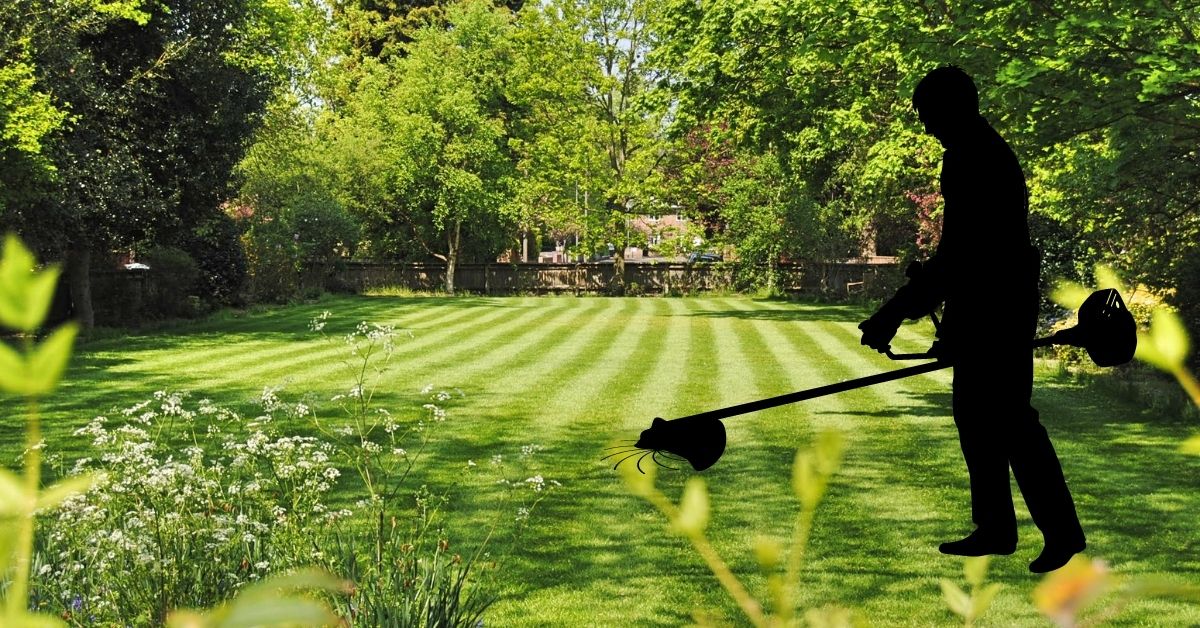
Erosion control planting
“Erosion mats” can be used to protect seeds against erosion. However, the seeds must have good seed/soil contact for optimum outcomes. Covering the seeds with an erosion matting material will not improve germination. The mats will aid with erosion prevention (and thus wash away seeds). Not to boost real germination rates.
Hydroseeding
When done appropriately, modern hydroseeding processes assist in maintaining excellent soil moisture in the top layer. The hydroseeding machine also gently presses the seeds into the topsoil, covering them with dirt for germination.
Some seeds might also benefit from soaking in a water tank before planting. When seeds are blended and applied appropriately, they are usually applied more uniformly. Only a certified applicator should use this procedure.
Using a turfgrass or slit seeder to plant
For planting grasses, commercially developed “turf” seeders are available. Some are designed to be planted in soil that has been prepared (Brillion seeders). Others use slit discs (slit seeders / No-till & grain drills).
The discs cut extremely small holes in your soil/grass and drive the seeds into these slits through tubes, ensuring greater seed/soil contact. They’re great for sowing into existing lawns to boost the type of grass sown or the overall stand. These planters are available from tiny walk-behind units to huge tractor ones.
When To Plant Grass Seeds?

Choose Your Type of Grass For The Best Time To Plant It
Either chilly season grass or warm-season grass must be used. The optimal time to plant your grass is influenced by the type of grass you have.
- Grasses for the Winter (Tall Fescue, Ryegrass, Bluegrass, Fine Fescue, Bentgrasses, etc.)
- Grasses for the Summer (Bahiagrass, Bermuda, Centipede, Zoysia, Carpetgrass, Buffalograss, etc.)
Certain grasses operate better at specific temperature ranges and throughout particular seasons. Planting seeds or seedlings at periods other than these might result in delayed germination or even failure and death.
Read on for general advice based on temperature ranges from grass specialists. For the optimal planting season in your location, consult your local Cooperative Extension agency.
Areas of Cool-Season Grass
When should cool-season grasses be planted? (Fescues, Kentucky Bluegrass, Bentgrass, Perennial Ryegrass).
Cool-season grasses are sown from the upper south and Midwest to the north. The optimum times to grow these year-round green grasses are in the fall and spring. Turf experts recommend planting in the early fall because it provides for an extra growing time under optimal growing conditions (fall and spring growing season). Spring is seen as a close second.
Planting in the autumn and spring twice can help to boost successful cover under challenging locations in some circumstances.
Plant Cool Season Grass Seed when the daytime temperature is between 60 and 75 degrees (and the soil temperature is between 50F and 65F).
What temperature does fescue stop growing?
Cool-season grass germinates best when the soil temperature is between 50 and 65 degrees F.
These temperatures are most common when the air temperature is between 60 and 75 degrees throughout the day. Summer’s high temperatures can cause these plants to become dormant, so planting in the summer is a recipe for disaster.
Start sowing your cold-season grass seeds when the temperature reaches 75 degrees and declines as autumn/winter approaches. Alternatively, you may be 60 years old and rising in the spring. Summer planting is possible, but watering is essential for establishment. Planting should be avoided when nighttime temperatures are over 70?
Does fescue go dormant?
Dormancy is common in cool-season grass growth when temperatures are between 90 and 50 degrees. When the chilly season, grass goes dormant; it basically stops growing. Also, keep in mind that freezes and/or frosts can harm or kill young seedlings that haven’t had enough time to harden off sufficiently to withstand a return to dormancy.
That is why you should avoid planting once the soil temperature drops below 50 degrees. When daytime highs fall below 55 degrees Fahrenheit, and a freeze or frost threat exists, you will experience trouble.
Problems You May Encounter With Late Seeding
- First, the seeds may sprout slowly and sporadically, or they may not germinate at all.
- Second, as temperatures drop below 50 degrees, there is a greater chance of an abrupt freeze or frost. You run the danger of the freeze/frost harming or killing your seedlings if this happens around the time they emerge.
- Third, even if you have a warm spell and the seedlings sprout, they may still die in the winter since they will not grow as much when the temperatures fall down… which means they will have “little” in the way of “food” stored in their root system. They may just starve to death in this instance.
- Unless you don’t mind the chance of late seeding failure, the best course of action is to wait till spring.
- Also, sowing in the late spring/early summer risks your plants succumbing to severe heat and diseases.
Areas of Warm Season Grass
When should warm-season grasses be planted? (Bahiagrass, Centipede, Zoysia, Bermudagrass, Buffalograss). Warm-season grasses are grown in locations ranging from the upper south to the midwest.
The optimal time to plant these seasonal grasses is in the spring through late spring/early summer of each year.
Turf experts recommend planting in the early summer since summer temperatures and rains allow for faster germination and establishment of the grass. (Planting can take place in most Southern US locales from March to August; later summer planting is conceivable farther south; April/May may be the earliest opportunity for planting in Northern states.)
Plant Warm Season Grass When Daytime Temperatures Are 80+ Degrees (Soil temp of 70+ degrees):
Warm-season grasses thrive at soil temperatures over 70 degrees Fahrenheit. These temperatures are most common when the air temperature hits approximately 80 degrees during the day. Temperatures at night are also a good indication of soil temperatures…
When the nighttime temperature is 65-70 degrees, the soil temperature should be fairly near to that. Cool temperatures can cause mature plants to fall dormant and hinder germination. Thus, planting in the autumn is riskier because germination may occur, and an early frost or freeze may damage smaller seedlings.
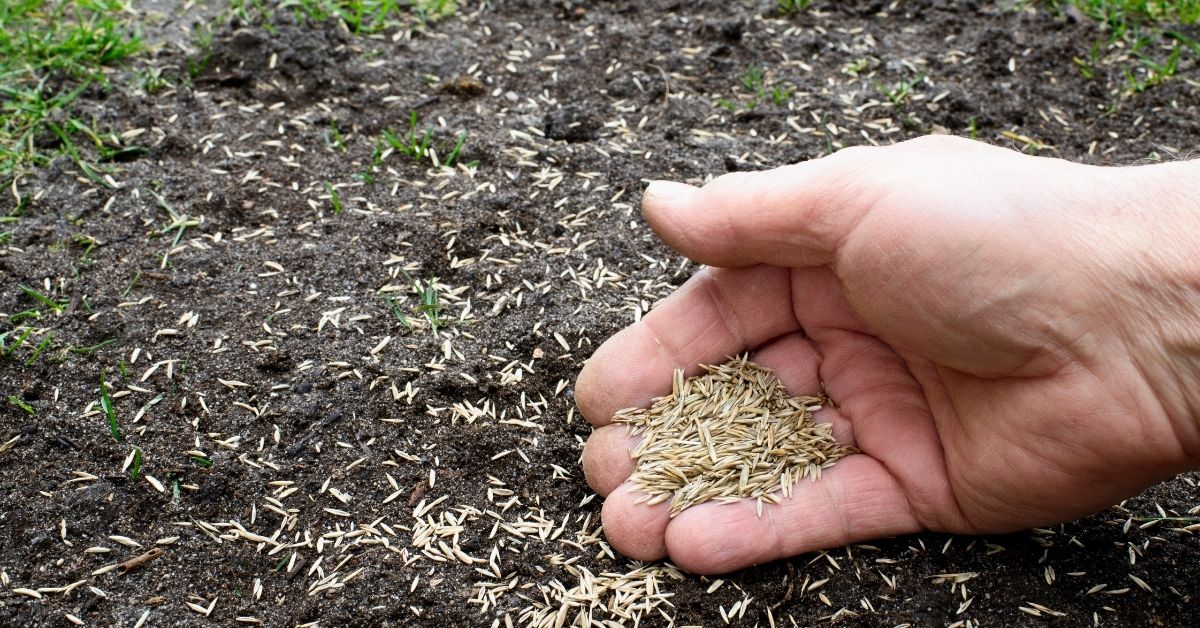
The majority of warm-season grass failures are caused by planting them too early!
If you’re impatient, start planting warm-season grasses in early April when the soil temperature is still low… Weeds may germinate (while your seeds wait for higher temperatures) and take up plant “turf space,” preventing the intended grass from growing in that location.
When your fresh grass seeds sprout, a lot of the turf space is already taken up by larger, more vigorous weeds that rob your new grass of essential resources (weeds soak up moisture, nutrients, and sunshine and take up real estate/soil area).
You can get the best results when you plant in the late spring or early summer. This is great for warm-season grasses once temperatures (soil temperatures of 65-70 degrees or above are optimum) have reached suitable levels AND all risk of frost has passed.
Fall Planting Risks
Plant a warm-season grass no later than 60 days before the first frost in southern parts and 90 days before the first frost in northern, colder areas in the fall. This limit is set to allow warm-season grass to mature to the point where it can endure winter hibernation (by accumulating food reserves).
Warm-season grasses’ sod and sprigs will not grow roots until the soil temperature is over 55° F for several weeks. This is also something to consider while planting sod.
Also, keep in mind that freezes and/or frosts can harm or kill young seedlings that haven’t had enough time to harden off sufficiently to withstand a return to dormancy when the weather warms.
Choosing A Type of Lawn Grass Seed
Seeding a lawn with grass seed can result in a beautiful “satisfying” experience if you follow the correct instructions for your type of grass seed.
But first, you must decide: “Which grass for my lawn?” That is a decision that is not easy to decide considering the wide range and availability of lawn seeds and grasses in today’s marketplace.
You must establish and follow the basic guidelines and rules that turfgrass agronomists have developed.
You can also improve the chances of selecting the best lawn and having a successful lawn one day by consulting with lawn care experts and homeowners in your local area. They know what works best and doesn’t work for your particular location. Try your Agricultural Extension Agent or reach out to your state university’s Ag Extension division.
Facts to Consider When Choosing A Lawn Grass
If you’re now ready to begin… The first step is to choose the best lawn grass for your particular need, situation, soil type, and location:
The correct lawn grass for your location depends on several factors. You should select the best one by exploring the list of choices and narrowing your list until the best and most practical choice is left.
The first Choice factor in determining if you need a Cool Season or Warm Season grass, or even if you need a grass suitable for the Transition zone area — which often may result in using a combined mixture of both warm and cool-season grasses in your lawn. (See maps below). Once you know this question, the next step should be to consider the various aspects of a lawn:
- Do you want a high-maintenance lawn? Or a low-maintenance lawn? Or just average? Keep in mind that higher maintenance means both time and money. But it also results in a more beautiful “turf quality” lawn. Does the cost matter to you?
- What kind of area do you want to plant? Is it wet or dry? Shady? Sandy or clay? A sloped or level site? Review it below.
- What will the use be of this lawn? For looks? For play? For sports? For erosion control? Or just to have something green growing?
- Will it have heavy traffic or light traffic? Traffic is foot traffic such as kids walking and running on the grass… or perhaps a pet – Different grasses handle these aspects differently.
Prioritize the importance of each one of these aspects, So that you can then select and rank the different grasses in relation to your lawn needs.
The three major areas of the USA use various different types of grasses for lawns and pastures.
- Warm Season Areas
- Cool Season Areas
- Transition Areas
Detailed USA Climate Zone Map
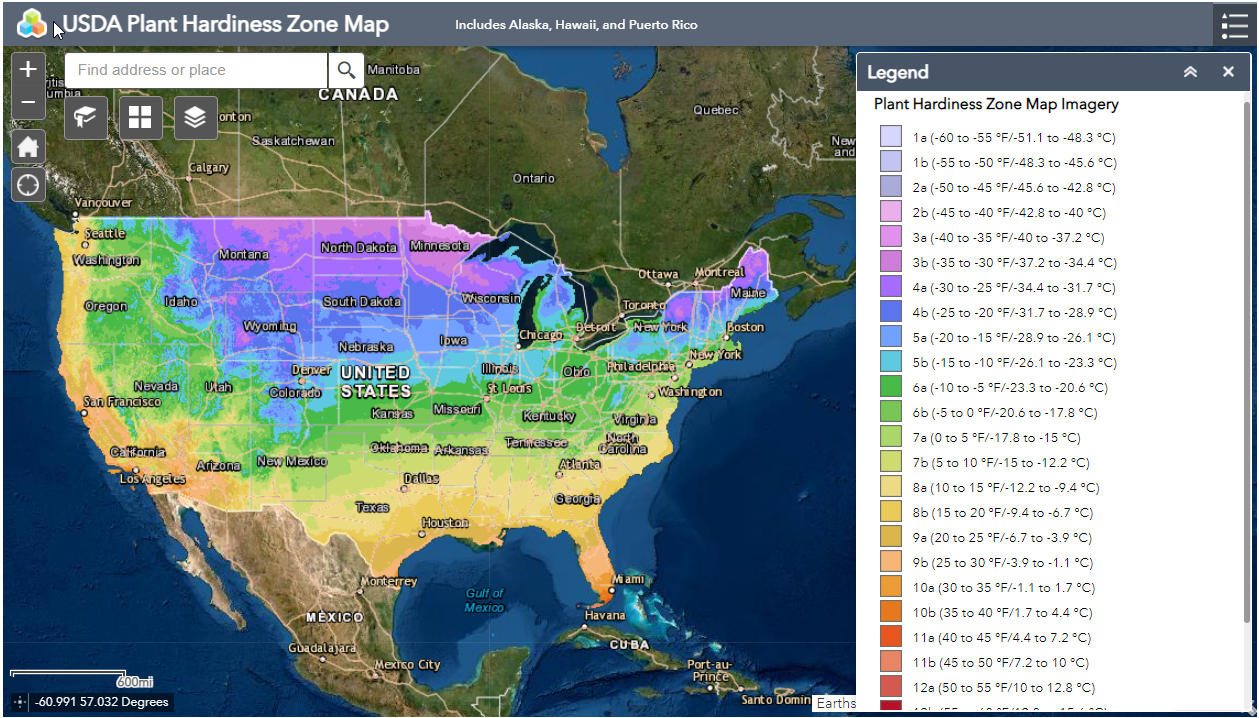
Here we will show you a more detailed map of the climate type zones of the USA. This map divides the areas of the USA into 5 divisions based on the type of climate in each division.
This helps eliminate confusion as some grass species are listed to grow in one area when in fact, the grass in question may also grow in other areas of the USA. For instance, some of the fescue varieties will grow on the NE coast as well as the NW coast of the USA.
Planning Your Grass Lawn

Smart Lawn Planning begins with a master plan for what you wish your future lawn to look like.
Laying out your lawn plan on paper can help you consider your new lawn’s different challenges and requirements.
Sometimes, it becomes obvious that one species or type of lawn grass species will not work due to your area’s different uses and conditions. In that case, it may be best to use either a blend — multiple types of the same grass seed species or perhaps a mixture — different types (species) of grass seed in areas of your lawn. With a proper plan, your future lawn grass can be much more successful than if you plant grass seed without a plan.
First, measure and draw out on paper the dimensions of your lawn. Get a tape measure and a friend to help you measure the shape and dimensions of your particular lawn. As you write these down… Look around each area of your lawn that you measure and take note of your lawn area:
- Is the area shady or sunny?
- Are the areas well-drained or wet?
- Will you need to install drainage in some areas?
- Will you be installing an irrigation system? Now is the best time – Before you plant your lawn.
- What type of soil is in each specific area?
- Will soil amendments be required to improve the soil?
- What will be the most likely usage of each particular area?
- Are there areas where ground covers or other plants and shrubs would work better in your plan? Grasses prefer the sun. Shrubs are not so picky.
- What about walkways? Paved or stone surfaces don’t usually show traffic wear and die like grasses may do under severe wear. Proper planning for walkways can save you lawn headaches later.
While you are out in your future lawn area – Take a soil sample and take it to your local county agent to be tested.
Once you’ve made your measurements and observations… Get it all on paper, and then make some decisions on what changes and/or adjustments might best benefit your particular lawn and site. Figure the square footage of your lawn area so that you can plant the proper quantity of seeds.
Lawns are always planted more heavily in seeds than a farmer’s pasture. This is because you want high plant density for a lawn, which will only happen with high seeding rates.
Also… unfortunately not every seedling survives, if it even makes it past germination… so you must plant additional seeds to overcome this “law of the lawn jungle” in which some seeds and plants die for various reasons.
Site Preparations for Seeding Grass
Laying the foundation of a good lawn starts before you ever plant your seed. By properly preparing your lawn site, you can avoid many different problems with your lawn down the road.
Problems like diseases, weeds, yellowing grass, and so forth.
One of the most c steps you can take before you seed your lawn is to take representative samples of your soil and conduct a professional soil test. A good soil test can show you the composition of your lawn, such as pH and organic content, along with recommended rates of fertilizers and minor elements that should be applied to your site. These are all things that you can fix prior to seeding your lawn.
The Steps To Take Before Planting Grass Seed Lawns
- Take a soil sample of your lawn area and send it off for testing.
- Kill off existing weeds and grasses on the site to be tilled up. This only applies to areas you will start from scratch on and not for overseeding / improving existing lawns. It is no longer recommended that you use a glyphosate type of herbicide. There are many less harmful and effective ways to kill an existing lawn. The tilling recommended below would be necessary if you use herbicides or not. It is the best way to remove grass and weeds.
- Do the first tilling of your lawn area. Note that every time you till, be sure and remove all roots and nodes from your soil. Then start working on making the initial “slope” to your lawn. Change any areas that need filling in or cutting down to provide a more level, properly sloped lawn area. An ideal lawn slope allows water to run off the site gently, usually at a slope of 1-2 foot drop per 100 feet (1-2% slope).
- Also, at this time, you can make changes in the slope and drainage of your lawn by moving the soil to improve these aspects. If large areas must be moved, try and set aside the top 5 inches (topsoil) of your soil to replace it back in the same location. After tilling the lawn the first time, you may apply organic amendments and/or topsoils to change the soil composition and texture. Your soil test should show if this is needed or not. You can determine this by doing the home soil texture test.
- Apply any initial soil fertilizers and till your lawn for the second time. You may now install any lawn sprinkler systems that you want in your yard. Install sidewalks and various types of walkways and patios. Before planting, start getting the finish grade before raking or dragging the lawn area smoothly before planting. The optimum finish is to make the entire lawn smooth and level, with the top 1-2 inches of soil having a fine composition.
- You are now ready to seed your lawn. For information on this part of the lawn planting process, proceed to seed.
Seeding Your Lawn With Grass Seed
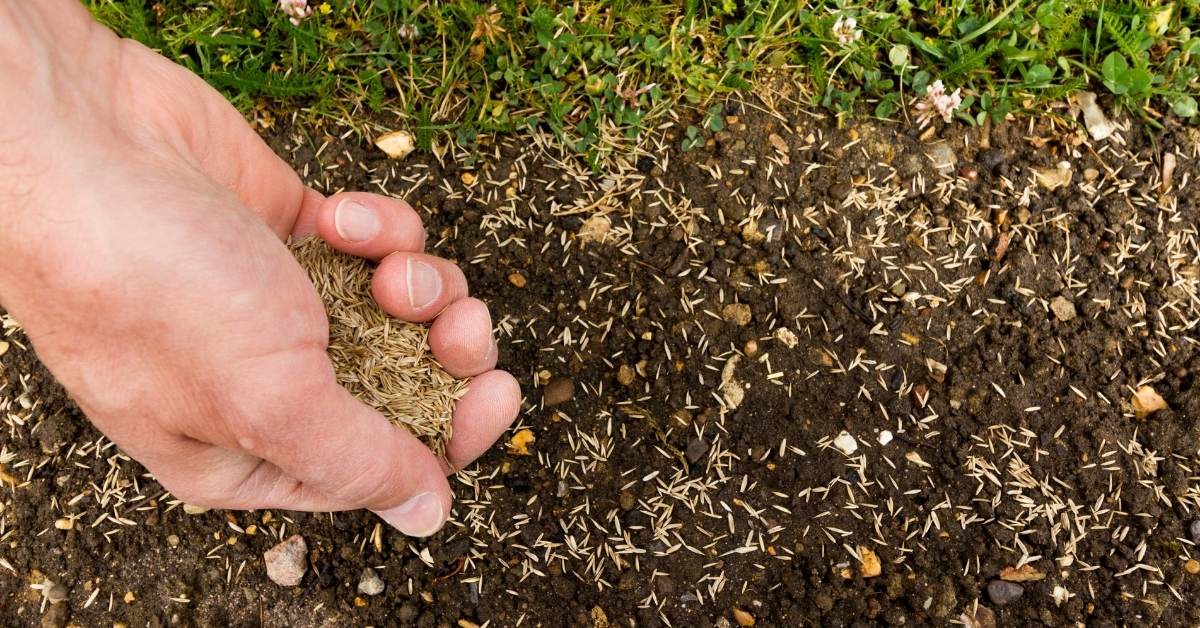
Now you are ready to seed your lawn. You are now ready to seed your lawn if the planting area has been leveled smooth and all debris has been removed along with the end of construction activity. LET’S GET STARTED!
Determine the amount of grass seed you will need for your lawn. Once you have the seed and are ready to start — Continue to Step (1)
This method can help avoid erosion problems and is an efficient way to seed large turf areas.
Four Steps To Planting A Successful Lawn
Step (1) Your lawn area should be already tilled with all roots, weeds, and debris removed. Secondly, the final level smooth surface should have been obtained. If not, now is the time to remove hills and depressions so that you have a nice soft lawn for years to come.
Step (2) Plant the seeds. You can use a commercial turf grass planter, sow the seeds by hand (not recommended), or, just as easy and much preferred, buy a broadcast seeder (handheld models are available for $8-30).
Set the seed for the correct seed application rate. Remember, you can always seed a second or third time, but it is pretty hard to pick up the seed you broadcast if you only planted 1/3 of your lawn and ran out of seed.
We suggest you use a 2-step PLANTING process… Divide your seed into two equal quantities. Set your seeder rate to cover the entire lawn with 1/2 of the total seed. You will need to determine how far the seeder is throwing the seed as you walk.
The ideal use is to walk in a pattern that allows double coverage (Seeding) of all areas. Most seeders come with instructions that explain this planting principle.
Plant the first 1/2 of the seed walking in one direction with your seeder. Then plant the second 1/2 of the seed walking in a direction 90 degrees to the first time. This double spreading provides for more uniform broadcasting of your seeds and also ensures that you get complete coverage of your lawn area.
Always sow lawn seeds at the recommended rates. Good quality lawns require lots of seeds to achieve the correct plant density. You will save very little money by cheating on the number of seeds to plant.
Step (3) Once your seeds are sowed, rake or drag the seeded area so that as many of the seeds as possible are lightly covered (1/4 inch is the ideal covering for grasses). Be sure and use the correct rate for seeding your particular lawn seed.
You can also drag a small fence post or preferably a piece of chain link fencing behind a mower, 4-wheeler, or tractor. This will drag the soil to cover your grass seed. These methods will cover not every seed, but a large quantity of them will, and over time soil and wind action will also work to cover additional seeds.
Step (4) Water the lawn area you’ve sown on a regular basis – normally every day for newly seeded lawns unless it’s raining. Apply fertilizer at regular intervals during the growing season, and mow regularly.
Mowing the weeds that will grow quicker than the grass in your new lawn area helps the grass to compete more effectively for scarce nutrients and sunshine.
Mow the lawn for the first time approximately 6 weeks after planting, then at regular intervals and the proper height. – Special Note: Newly planted lawns need to be watered more often, generally once or twice daily.
Be sure and read our afterwards section on lawns below
This section contains valuable and important information about your newly seeded lawns. Just because you have the lawn planted doesn’t mean you can go on vacation. There are still necessary procedures to observe until your lawn gets to the “adult” stage in its life cycle.
Hydroseeding Grass Seed
Hydroseeding grass seed is often used to economically seed large areas of lawns, especially on commercial projects. It is used extensively by commercial grassing contractors, for planting large areas and in areas (such as slopes) where standard planting methods may not be easily accomplished.
Hydroseeding Grass Seed
Hydroseeding has recently gained favor for the planting of lawns for homeowners, though cult-packer-type applications still can accomplish as good or better seeding results.
Hydro is not an inexpensive method of planting. With hydroseeding, you will need specialized equipment to seed. A mixture of seed and mulch is placed in a container of water, and the resulting slurry mixture is sprayed (blown) on the prepared lawn area to be planted.
The advantage of this method is that the slurry material supposedly absorbs water and allows this storage of water to be available to the seed that is in contact with the material. Seeds need water to start the germination process.
Hydroseeding experts say that the seeds germinate better than with methods that use the more conventional “cultipacker / roller” packing methods.
Fertilizers can also be applied using the hydroseeding method at the same time as the seeds are planted. A cover crop of millet or ryegrass can also be applied in the mixture to give a fast germinating ground cover until the grass you are planting becomes established. This method is only recommended for use during the growing season of your particular grass species.
Caring About Your New Lawn
So you’ve planted your grass and are probably wondering when it will become green. When, oh when, will my seedlings germinate?
Suppose you performed everything correctly while establishing your lawn, including a soil test, fertilizers, suitable grade, the appropriate grass seed for your location, proper Seeding, and the planting depth. Then you’re on your way to a lovely lawn like the one seen here on the right.
Getting Your New Lawn Grass To Grow
First and foremost, keep watering your newly sown area regularly. WATER and TIME are required for the seeds to germinate. Be patient — most seeds might take anywhere from 7 to 35 days to germinate, depending on the circumstances.
The ideal circumstances are typically warm soil temperatures (even cool-season grasses require some warmth) and enough moisture levels.
Many people plant their grass one week and then wonder, “Why don’t I have a lawn yet?” the following week. It usually takes 9 months for you to “germinate” and emerge into the actual world, just like when you were born. It’s the same with lawn grass, but it takes less time.
The tiny live seeds must first determine whether the environment (and timing) are favorable for them to begin their growing process. Some grass seeds can survive in the soil for months or even years before commencing this process. They are generally little BABY plants even when they finally emerge from the earth (7–35 days).
In addition, as infant plants, their root and leaf systems are not yet established enough to withstand strong shocks. Just as you needed to grow bigger with the correct nutrients and water when you were a baby, so do infant grass plants need to grow bigger to withstand all you’ll ask of them.
Does fescue grass spread?
You should be able to get down on your hands and knees and view many of the sprouting small grass seedlings of your particular grass type after anywhere from 2 weeks to 2 months. Most grasses have small needle-like leaves that stick largely straight up out of the ground. These little plants will spread among the other weeds that will have germinated as well.
And most likely, the majority of your weed seed was already present in your soil before you planted it, and the seed you just planted did not bring it to life. But don’t be concerned.
That’s typical for grass lawns, and grasses, for the most part, have devised a method to crowd out the bulk of those new weeds over time. On a fresh lawn, you should try to reduce traffic as much as possible. While they are attempting to establish themselves and grow up, the newborn grass plants don’t want to be disturbed!
After approximately 60-90 days, these young plants will grow big enough for you to start tromping your power mower over the tops of them to keep the aggressive (and typically bigger/stronger) weeds from wiping out your newborn grass plants.
In effect, mowing allows for an even playing field. Mowing also encourages the grasses to start tillering and running, which is their nature. Be sure to set your mower at the right height for the particular grass species you are planting.
Keep up the continuous watering until around 45-60 days after planting. By then, your grass plants should be big enough to start stretching out the period between watering without harm. This is really helpful since it makes the plants push their roots down deeper into the soil instead of just the top few inches.
This leads to the plant being able to resist higher extremes in rainfall. The recommended watering regimen is to water deeply 1-2 times a week during regular months.
It’s now time to contemplate a second fertilizer application to your lawn, depending on the type of lawn grass planted. Sure, you may now think about taking that vacation.
Just be sure you have someone lined up to mow your lawn while you’re gone, make sure the watering system works correctly, and keep the neighborhood kids off the grass until it becomes adult grass plants!
